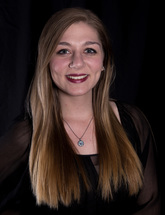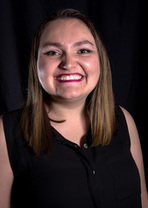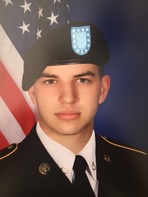 By Brenna Parker Each year, ten lucky PR students are selected by the PRKent faculty to compete in the PRSSA Bateman Case Study competition. The Bateman Case Study Competition is PRSSA’s premier national case study competition for public relations students, and allows students the opportunity to work for a national client on a campaign. Students are able to take what they learn in the classroom and in their internship experiences to create and implement a full public relations campaign over the spring semester. From October 2015 to April 2016, my team and I researched, planned and implemented a campaign for Student Veterans of America, a nonprofit organization that provides resources and opportunities to student veterans. The 2016 Bateman Case Study Competition challenged us to raise awareness and spark local and national dialogue around student veterans. We created Supporters of Student Veterans of America (SSVA), an educational movement for those interested in supporting student veterans in their transition from the military to the college classroom. The educational program consisted of six videos that aimed to help supporters understand the challenges student veterans face. The SSVA website provided supporters with resources to suggest to student veterans who may be facing challenges in their transition to college. Supporters of Student Veterans of America is dedicated in memory of Bradley "Sonny" Sonenstein, a student veteran at Kent State University who died in November 2015. The campaign earned an honorable mention in the Public Relations Student Society of America’s annual Bateman Case Study Competition. The Bateman Blue team was one of 16 entrants out of 70 from across the country that earned honorable mention. This is the second time in three years and the third time since 2008 a PRKent Bateman team was recognized with an honorable mention. My advice to students taking this course:
Check out my team's website, Facebook, Twitter, YouTube and Instagram accounts and casebook. For more information about the National Bateman Case Study Competition, visit http://prssa.prsa.org/scholarships_competitions/bateman or contact Tim Roberts at tarober1@kent.edu. Brenna Parker is a senior public relations major and is PRSSA Kent's vice president of professional relations. Contact her at bparke12@kent.edu.
0 Comments
 Digital Public Relations, previously named PR Online, is a course focused on building a brand online: both for yourself and for a class assigned client. Every student in the class is required to start a blog for personal branding. Be sure to choose a topic that can be related back to public relations in some way. It doesn’t have to be the main focus of your blog, but one blog post does need to be about the intersection of your topic and public relations. For example, my blog focused on online dating, and I dedicated a whole post to companies purchasing advertisements on dating apps like Tinder. Another aspect of the class is working with a client. Each semester, the entire class works with a new client, helping identify a problem and create a solution with the client’s online presence. This involves looking into programs like Hootsuite and Google Analytics. You learn skills like online listening and monitoring and reporting on analytics. There are various other projects that occur throughout the class, with the focus being on all things digital! Students will learn how to create podcasts through programs like Audacity, learn the basics of online writing, create social media audits and become certified in Hootsuite Academy - a skill you can add to your resume! To succeed in this class, make sure to do the following:
Erin Zaranec is a senior public relations major and is PRSSA Kent's president. Contact her at ezaranec@kent.edu.  By Hanna Moore Public Relations Campaigns is the capstone course in the PRKent sequence and is taught by PR Sequence Coordinator Michele Ewing, APR. This class provides an opportunity for you to experience the practice of strategic public relations. Each class has a real-client, for which teams have to create and present a public relations plan. Past clients have included Kent State’s Student Multicultural Center, Akron Children’s Hospital and Eaton Corporation. You will work with a group for the entire semester to develop a realistic and measurable plan that your client could implement in the future. Class time is typically made up of team meetings, class discussions, advising and hands-on application of public relations principles. Each team has three professional advisers who help shape the strategy of your plan and look over your plan before you submit it. PR Campaigns also offers advice about how to get a job in public relations and how to approach today’s competitive job market. Assignments for this class include a research report and situation analysis, a preliminary public relations plan, a final plan/proposal document and a presentation. You are also graded individually on peer evaluations and professionalism/individual work. To succeed in this class:
Hanna Moore is a senior public relations major and PRSSA Kent’s web and social media manager. Contact her at hmoore16@kent.edu.  By Daniel Henderson I was lucky enough to take this class after the transformation from “broadcast beat reporting” to just “broadcast reporting.” This switch lessened the workload but put a lot more time into crafting each individual skill that goes into creating a broadcast package. Professor Dworznik has over 18 years of experience in broadcast journalism, and has structured the class to make sure every student is proficient in the basics, so that all of their broadcast stories (or packages) are ready to be put on a reel (a broadcast journalists resume/portfolio). This is all lingo that you’ll pick up in the class, don’t worry. Now, many of you may be wondering, “well jeez, I’m a public relations major, why would I take a broadcast class? Shouldn’t I focus more on writing in print reporting?” And you’re not wrong. Writing is a fundamental skill that every PR professional should have a distinct mastery of, and hopefully that mastery has been honed during your time in storytelling and news writing. No doubt, print beat might be the option for you since these classes are interchangeable. But the lessons learned in broadcast reporting wills service you well. Knowing how to write for the ear, and knowing what a broadcast journalist is looking for to do a broadcast story (visuals, sound bites, nat pops) will help you better put together an event and pitch it to broadcast media outlets. My advice on passing the class:
Daniel Henderson is a senior public relations major and PRSSA Kent's treasurer. Contact him at dhende21@kent.edu.  Going into my second semester at Kent State, I finally began taking courses relating to my major. I was so excited to dive into learning more about my career. My first big class, writing across platforms (WAP), changed my perspective on, not only public relations, but journalism as well. At first, I questioned why I even needed to take a journalism class, after all, I was a PR major! I was confused, thinking elements of journalism couldn't help me in the PR Field. I was wrong. Writing Across Platforms is a newswriting class, the first one in the PR sequence. This class pushed me out of my comfort zone, providing me with more out-of-class work than I was used to. I had to gather all the information for stories on my own. I felt annoying stopping students around campus to ask them a few questions about my topic or stressed when scheduling a time in-between class to meet with sources. I had to learn how to budget my time to get each assignment done. Though this class was hard work, it was clear to me by the end that it was necessary for me to have journalism skills to succeed in the PR program. If you follow my advice below, you will learn some amazing skills from this class. 1.Do ALL of the assignments When I began WAP, I had no idea what AP style was. This change alone opened a whole new world for me. Each class we would practice stories, leads, AP style and sentence structure. By the end of the semester, I was not only able to write in AP style, but could confidently put together a story on my own. I knew the story structure like the back of my hand and took the professors advice when it was given. Do not slack on your stories, it will only make the upper level courses more difficult. 2.Take on stories you don’t know much about At the beginning of the semester, I was nervous to try any story that I wasn’t either 100% comfortable with or somewhat knowledgeable on. I always went to ideas that included someone I knew personally to interview or that I had experienced first hand, like an event. After what seemed like my 100th interview, I finally got the hang of talking to people and other topics out of my comfort zone. This made the class much more invigorating and refreshing, constantly learning new things around campus. Looking back, I wish I would have done that from the start. Don't be afraid to go out of your comfort zone! 3.Keep up with current events Before taking this class, I never paid attention to the news. I used to avoid it actually, always thinking it was too negative. My professor required us to know weekly events, giving out a pop quiz every Wednesday. At first I found this task annoying, but the more routine it became the more I enjoyed it. I could join in on discussions with classmates and friends about topics I had never thought about before. I highly advise to keep up with current events, even when it isn’t for a class. You can learn so much about the world and educate yourself on current issues. Writing Across Platforms is an amazing class that teaches you so many useful journalism skills. It is the foundation for learning proper newswriting, and is extremely useful for your upper level classes. Though it may seem like a lot of work and overwhelming at first, you need to do your best and push through it. Your hard work will show through your writing. Good Luck! Hannah Wagner is a sophomore public relations major and is PRSSA Kent's editor. Contact her at hwagner8@kent.edu. |
Archives
February 2024
Categories
All
|
 RSS Feed
RSS Feed
